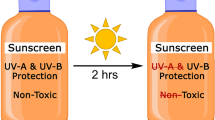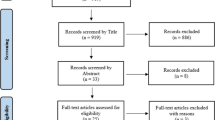Summary
Previous studies have related colour vision loss to solvent exposure, raising the question as to its use as an indicator of solvent-related neurotoxic alterations. However, colour vision loss can likewise result from ocular damage. In the present study chromatic discrimination capacity and ocular integrity were examined among 23 workers of a paint manufacture plant exposed to solvent mixtures. Using industrial hygiene data, the workers were classified according to their exposure level: moderate (n = 13) and high (n = 10). Colour discrimination capacity was assessed using the Farnsworth-Munsell 100 Hue, a colour arrangement test, providing qualitative and quantitative data. Biomicroscopy, funduscopy and peripheral visual field tests were used to examine ocular integrity. The results showed a significantly higher prevalence (P < 0.02) of chromatic discrimination loss among the highly exposed workers (80%), as compared to the moderately exposed (23.1%). Ocular examination revealed no apparent major damage, although slight posterior sub-capsular opacification, indicative of incipient cataract, and, diminished foveal reflex were observed among 1/3 of the workers. Lens opacification was related to age and exposure duration, but not to exposure level. Diminished foveal reflex was not related to either age, exposure duration or level. Neither observation was related to chromatic discrimination loss. These findings support the hypothesis that chromatic discrimination impairment, associated with solvent exposure, reflects neural, rather than ocular, damage. The authors propose that tests of acquired colour vision loss be included in field batteries to evaluate neurotoxic effects of solvent exposure.
Similar content being viewed by others
References
Bettelheim FA, Siew EL (1982) Biological-physical basis of lens transparency. In: McDevitt DD (ed) Cell biology of the eye. Academic Press, New York, pp 243–286
Blain L, Mergler D (1986) La dychromatopsie chez les personnes exposées professionellement aux solvants organiques. J Fr Ophtal 9:127–133
Bowman KJ, Cameron KD (1984) A quantitative assessment of colour discrimination in normal vision and senile macular degeneration using some colour confusion tests. Doc Ophthal Proc Ser 39:363–370
Bowman KD, Collins MJ, Henry J (1984) The effect of age on the Panel D-15 and Desatured D-15: a quantitative evaluation. Doc Proc Ophthal Ser 39:227–231
Farnsworth D (1943) The Farnsworth-Munsell 100 Hue and dichotomous test for color vision. J Optical Soc Am 33:568–578
Gehring PJ (1971) The cataractogenic activity of chemical agents. CRC Critical Rev Toxicol : 93–118
Règlement sur la qualité du milieu de travail (1982) Gouvernement du Québec. S-2.1 r.15,D576-82, GO II, 1244
Häkkinen L (1984) Vision in the elderly and its use in the social environment. Scand J Soc Med [Suppl] 35:23–24
Helve J, Krause U (1972) The influence of age in the Panel D-15 colour test. Acta Ophthal 50:896–900
Horan J, Kurt TL, Landrigan PJ, Melius JM, Singal M (1985) Neurologic dysfunction from exposure to 2-t-butylazo-2-hydroxy-5-methylhexane (BHMH): a new occupational neuropathy. Am J Publ Health 75:513–517
Kuck JFR (1970) Metabolism of the lens. In: Clive N Graymore (ed) Biochemistry of the eye. Academic Press, NewYork, pp 261–315
Perkins ES, Debree JH (1972) The differential diagnosis of fundus conditions. Henry Kumpton Co, London
Raitta C, Husman K, Tassavainen A (1976) Lens changes in car painters exposed to a mixture of organic solvents. Alb v Graef Arch Klin Exp Ophthal 200:149–156
Raitta C, Seppäläinen AM, Huuskonen MS (1978) n-Hexane maculopathy in industrial workers. Alb v Graef Arch Klin Exp Ophthal 209:99–110
Raitta C, Teir H, Tolonen M, Nurminen M, Helpiö E, Malmström S (1981) Impaired colour discrimination among viscose rayon workers exposed to carbon disulfide. J Occ Med 23:189–192
Rosenfield L, Spector A (1981) Changes in lipid distribution in the human lens with the development of cataracts. Exp Eye Res 33:641–650
Ruddock KH (1965) The effect of age upon colour vision I: Response to the receptoral system of the human eye. Vis Res 5:37–45
Schaumberg HH, Spencer PS (1978) Environmental hydrocarbons produce degeneration in cat hypothalamus and optic tract. Science 199:199–200
Spector A (1970) Aging of the lens and cataract formation. In: Sekuler R, Kline D, Dismukes R (eds) Aging and human visual function. Alan R Liss Inc, New York, pp 27–43
Verriest G (1963) Further studies on acquired deficiency of colour discrimination. J Opt Soc Am 53:185–195
Verriest G (1964) Les déficiences acquises de la discrimination chromatique. Acad Roy Med Belg IV:37–327
Author information
Authors and Affiliations
Additional information
Research group associated to the Quebec Institute for Occupational health and safety
Rights and permissions
About this article
Cite this article
Mergler, D., Blain, L. & Lagacé, JP. Solvent related colour vision loss: an indicator of neural damage?. Int. Arch Occup Environ Heath 59, 313–321 (1987). https://doi.org/10.1007/BF00405275
Received:
Accepted:
Issue Date:
DOI: https://doi.org/10.1007/BF00405275




